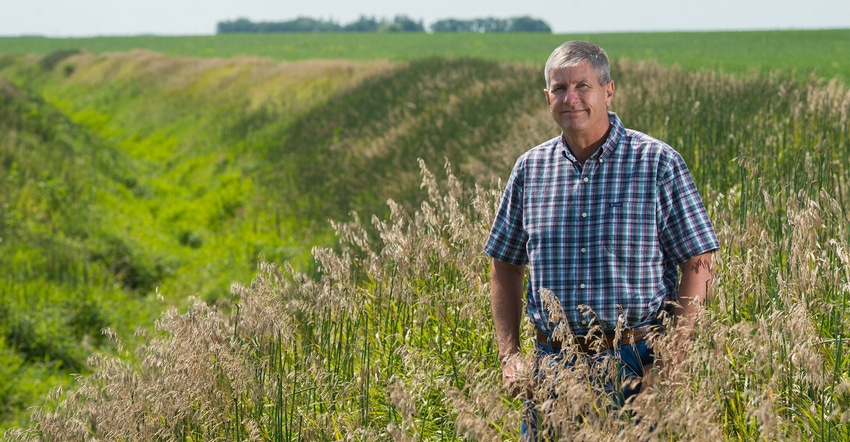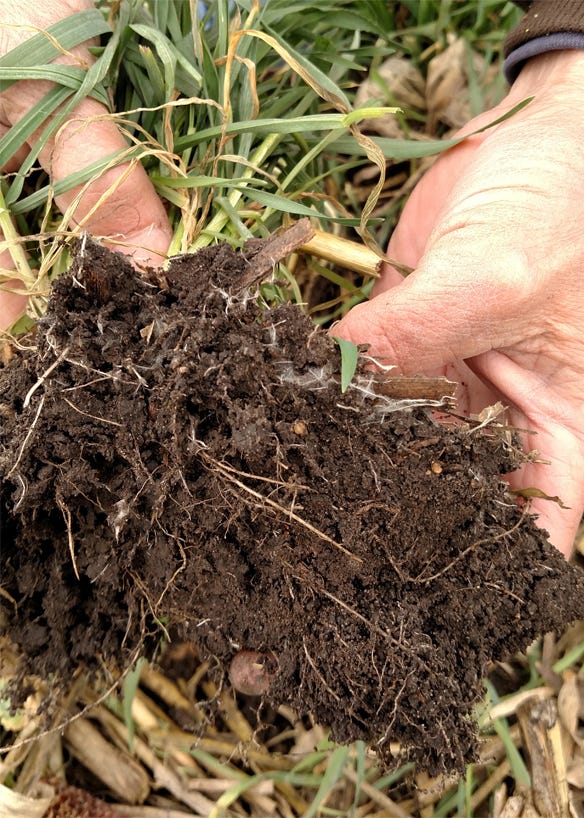September 5, 2018

Farming in Wright County in north-central Iowa, Tim Smith wants to be part of the solution. In 2011, he began adding practices that kept soil in place and held nutrients to improve soil health and water quality.
Smith says he’s thankful for the assistance and guidance he receives from his local Natural Resources Conservation Service office. “In my watershed, there are three funding sources for planting cover crops. Many farmers say they want to leave the farm in better shape for the next generation, but the reality is we are losing soil. If we put an economic cost on that soil loss, we realize we need to do a better job and take advantage of the programs that are available.”
Matt Lechtenberg, water quality initiative coordinator for the Iowa Department of Agriculture and Land Stewardship, attributes some of the success of cost-share programs to landowners realizing the value of keeping the soil in place. “As a public agency, we want to build a program that helps a farmer implement a new practice even though there isn’t an immediate return on their investment,” he says.

COVERS CRITICAL: “We all need to step up for conservation and water quality, and start doing things like cover crops,” says Tim Smith. “It’s a long-term process, but the benefits are going to add up.”

Conservation plan builds productivity
Besides implementing a cover crop plan, Smith has used funds to build a bioreactor, adopt strip-till practices and develop a nutrient plan that is economically feasible and maintains a high level of productivity for his farm.
“Before I adopted these practices I thought I was doing the right things. But through soil and water testing, I learned I can do things differently and more efficiently,” Smith says.
Smith says his NRCS office helped make the cost-share application process simple.
Jon Hubbert, assistant state conservationist for programs, is glad to hear that. “Our goal is to provide farmers with the voluntary support they need to overcome the risk associated with trying something new,” he says. “For example, NRCS offers financial assistance for nutrient management test plots. This assistance provides an incentive for producers to collect and analyze data from their own land, so they can make an informed decision based on their results. These incentives are meant to offset the time involved.”
Using nutrient management practices
The goal on the public side, says Hubbert, is to improve water quality and find a more economical way to produce the food we all rely on. He says several conservation practices offered through the Environmental Quality Incentives Program were designed to get farmers thinking about how they can manage nutrients in a different, more targeted way.
“The application process for EQIP is continuous. We have batching dates and pull applications to get approvals in a timely manner,” he says. “We want to give farmers plenty of time to have the knowledge and technical assistance they need to adopt a new nutrient strategy.”
Hubbert adds, “We want to provide financial assistance where we can. We talk with farmers to get them thinking about how to reduce input costs and increase productivity, be more cost efficient, and reduce their risk.”
Smith is thankful that conservation and nutrient stewardship practices are voluntary and wants it to stay that way. “We need farmers from across the state taking advantage of cost-share programs to make a more noticeable difference. Changing your mindset about the way you farm is the most difficult part of the process. Then you just open the door at the NRCS office and step in and let those folks help you.”
For more information on how conservation and nutrient management strategies can work together on your farm, visit 4rplus.org.
Source: 4R-Plus
You May Also Like




